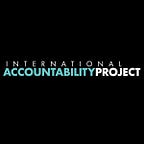What if development were designed and lived by the same people? An 8 Step Guide to Community-led Development
Thien Hoang
In a village in Northeast Thailand, a large crowd gathered around a truck on an otherwise sleepy country road. It was a hot and humid summer afternoon, with a light breeze coming in from the Mun river. My friends and I were walking down the street and were surprised to see so many people surrounding the truck. The truck itself was a type of food truck, popularly used as a mobile market in areas where there are no local markets nearby. Curious about the commotion, I glanced into the boxes displayed outside. They were packed with fish in containers of ice. Around me, women were chatting excitedly about how fresh the fish were and what dishes they planned to cook for dinner.
At first glance, there doesn’t seem to be anything extraordinary about this scene. The village is after all located right next to the Mun river, the longest and largest river in Northeast Thailand. But for over two decades now, local communities do not have access to fresh fish like they used to in the past. Due to depleted fish stocks, they often have to buy fish from outsiders to meet their everyday needs. This has been their reality ever since the constriction of the Pak Mun Dam in 1991.
The construction of the 136 MW dam, which was officially approved in May 1990 and constructed with funds from the World Bank, effectively wiped out the local fish populations and severely impacted the lives and livelihoods of local communities. A report by the World Commission on Dams found that the dam’s fish pass, which had been designed for leaping trout and salmon found in European countries, was ineffective in aiding species living in the Mekong River. The poor quality of consultations, lack of public participation and inadequate compensation further contributed to the losses experienced by local communities. Even now, decades after people were displaced and the ecosystem altered, communities continue to grapple with the long term impacts, including the lack of access to fresh fish and traditional livelihoods.
The Pak Mun dam is a good example to illustrate the importance of designing development projects with the leadership of local communities so that their opinions, knowledge, and expertise may lead the way to better outcomes. An approach like this is rarely found in project documents but this does not have to be the case. Through community-led research and other interventions, communities can weigh a project’s pros and cons and intervene at an early stage so they may shape their futures the way they want.
The 8 Steps to Community Led Development
If you’re looking for a guidance to start the community-led development, this infographic below may be a useful introduction. The 8 Step infographic is designed and simplified from the Back to Development — A Call For What Development Could Be report. It comes from the International Accountability Project’s Global Advocacy Team initiative, which brought together a team of 8 advocates, community organizers, human rights workers and activists who had been working with communities affected by harmful development in 8 different countries, not unlike the experiences of communities affected by the Pak Mun dam. They interviewed 800 people to ask their views and recommendations on the type of development they would like to see in their communities. These are the results, summarized into 8 simple steps.
This infographic is also available in Arabic, Burmese, French, Georgian, Khmer, Portuguese, Russian, Spanish, Tagalog, Thai, Vietnamese. We encourage anyone interested in advancing community-led development to consider these 8 steps and follow the leadership of local communities!
